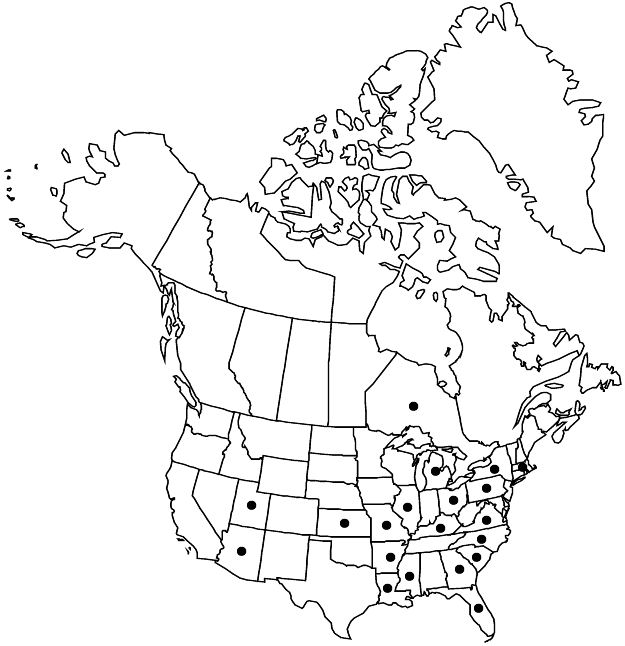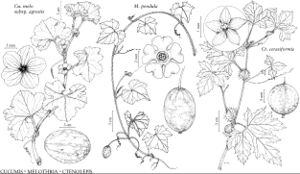Plants: roots thin, without thick, woody rootstock. Tendrils hispidulous or antrorsely strigose. Leaves: petiole hispid to retrorsely strigose; blade broadly ovate, palmately 5- or 6-lobed, 6–15(–40) × 6–15(–35) cm, length 1–1.2 times width, base cordate, lobes triangular, margins serrate. Inflorescences: pedicels of pistillate flowers and fruits cylindric; staminate flowers (1–)3–7(–10) in fascicles, corolla tube 3.5–5(–6) mm; pistillate flowers: calyx lobes 3–4(–12) mm, petals 10–15(–25) mm, corolla tube 3.5–6.5 mm, glabrous inside. Pepos green to yellowish monocolor or with light green to whitish stripes, ellipsoid to cylindric, 5–20(–25) × 3–5 (–12) cm, smooth (ovary and developing fruits weakly aculeate), flesh whitish. 2n = 14.
Phenology: Flowering Aug–Nov.
Habitat: Gardens, fields, stream banks, around ponds, trash heaps, sometimes volunteering from past plantings
Elevation: 10–300(–1500) m
Distribution

Introduced; Ont., Ariz., Ark., Fla., Ga., Ill., Kans., Ky., La., Mass., Mich., Miss., Mo., N.Y., N.C., Ohio., Pa., S.C., Utah, Va., Asia (e Himalayas), introduced also in West Indies, Pacific Islands (Hawaii).
Discussion
Selected References
None.
